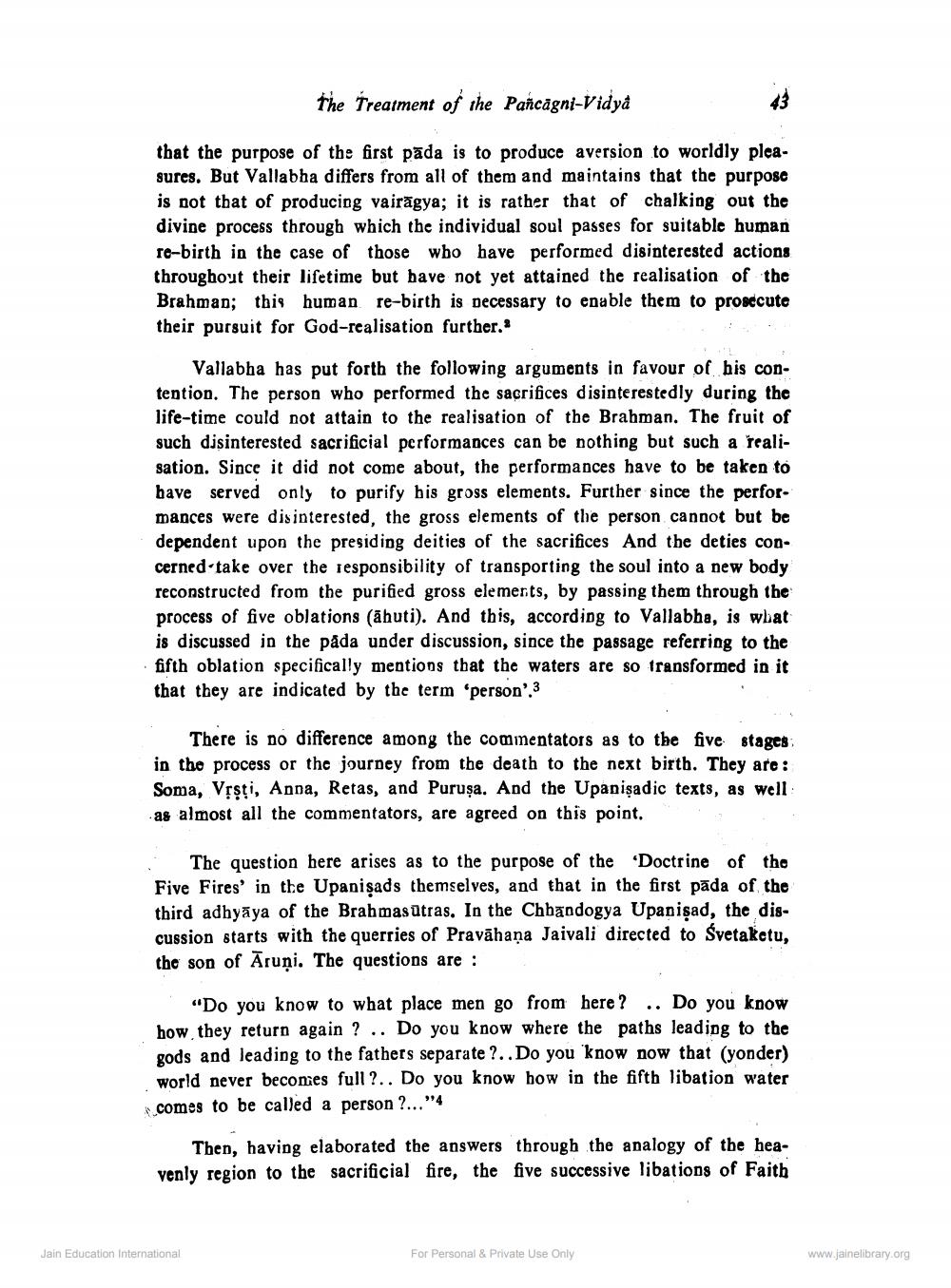________________
the Treatment of the Pancagni-Vidya
that the purpose of the first pāda is to produce aversion to worldly pleasures. But Vallabha differs from all of them and maintains that the purpose is not that of producing vairāgya; it is rather that of chalking out the divine process through which the individual soul passes for suitable human re-birth in the case of those who have performed disinterested actions throughout their lifetime but have not yet attained the realisation of the Brahman; this human re-birth is necessary to enable them to prosecute their pursuit for God-realisation further.
Vallabha has put forth the following arguments in favour of his contention. The person who performed the sacrifices disinterestedly during the life-time could not attain to the realisation of the Brahman. The fruit of such disinterested sacrificial performances can be nothing but such a realisation. Since it did not come about, the performances have to be taken to have served only to purify his gross elements. Further since the performances were disinterested, the gross elements of the person cannot but be dependent upon the presiding deities of the sacrifices And the deties concerned-take over the responsibility of transporting the soul into a new body reconstructed from the purified gross elements, by passing them through the process of five oblations (ahuti). And this, according to Vallabha, is wbat is discussed in the pada under discussion, since the passage referring to the fifth oblation specifically mentions that the waters are so transformed in it that they are indicated by the term 'person'.3
There is no difference among the commentators as to the five stages in the process or the journey from the death to the next birth. They are: Soma, Vrsti, Anna, Retas, and Puruşa. And the Upanişadic texts, as well as almost all the commentators, are agreed on this point.
. The question here arises as to the purpose of the 'Doctrine of the Five Fires in the Upanişads themselves, and that in the first pāda of the third adhyāya of the Brahmasutras. In the Chbandogya Upanişad, the discussion starts with the querries of Pravāhana Jaivali directed to Svetaketu, the son of Āruņi. The questions are :
"Do you know to what place men go from here? .. Do you know how they return again ? .. Do you know where the paths leading to the gods and leading to the fathers separate ?..Do you know now that (yonder) world never becomes full ?.. Do you know how in the fifth libation water comes to be called a person ?..."4
Then, having elaborated the answers through the analogy of the heavenly region to the sacrificial fire, the five successive libations of Faith
Jain Education International
For Personal & Private Use Only
www.jainelibrary.org




